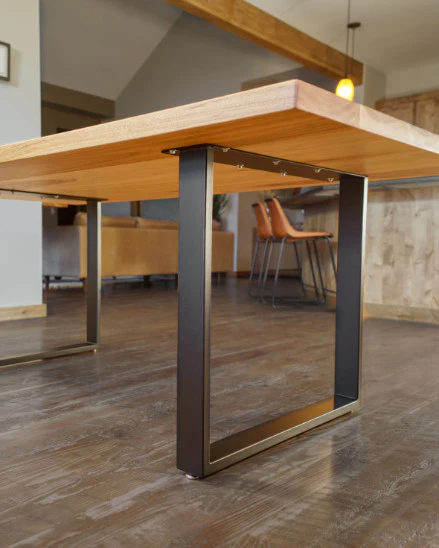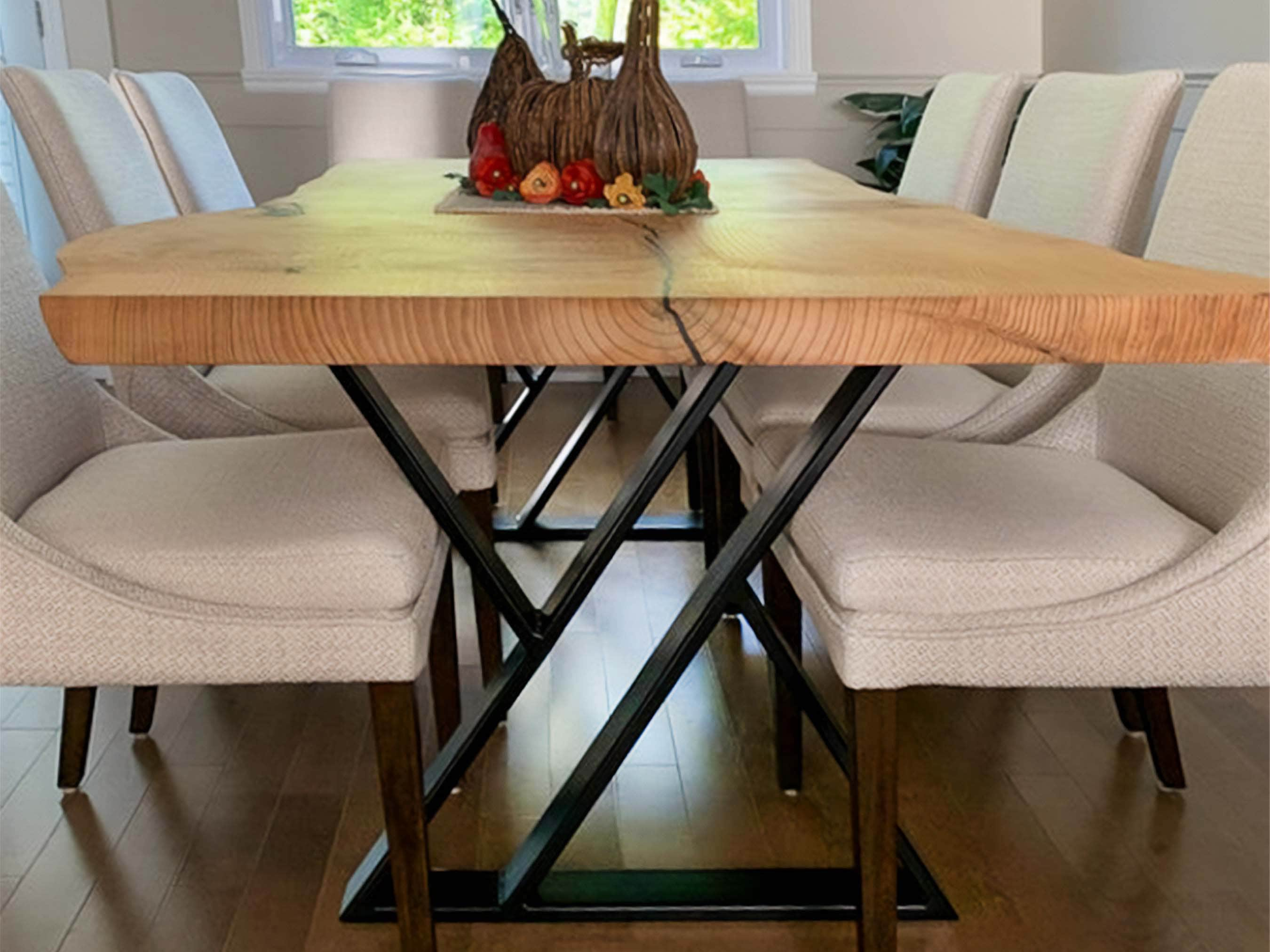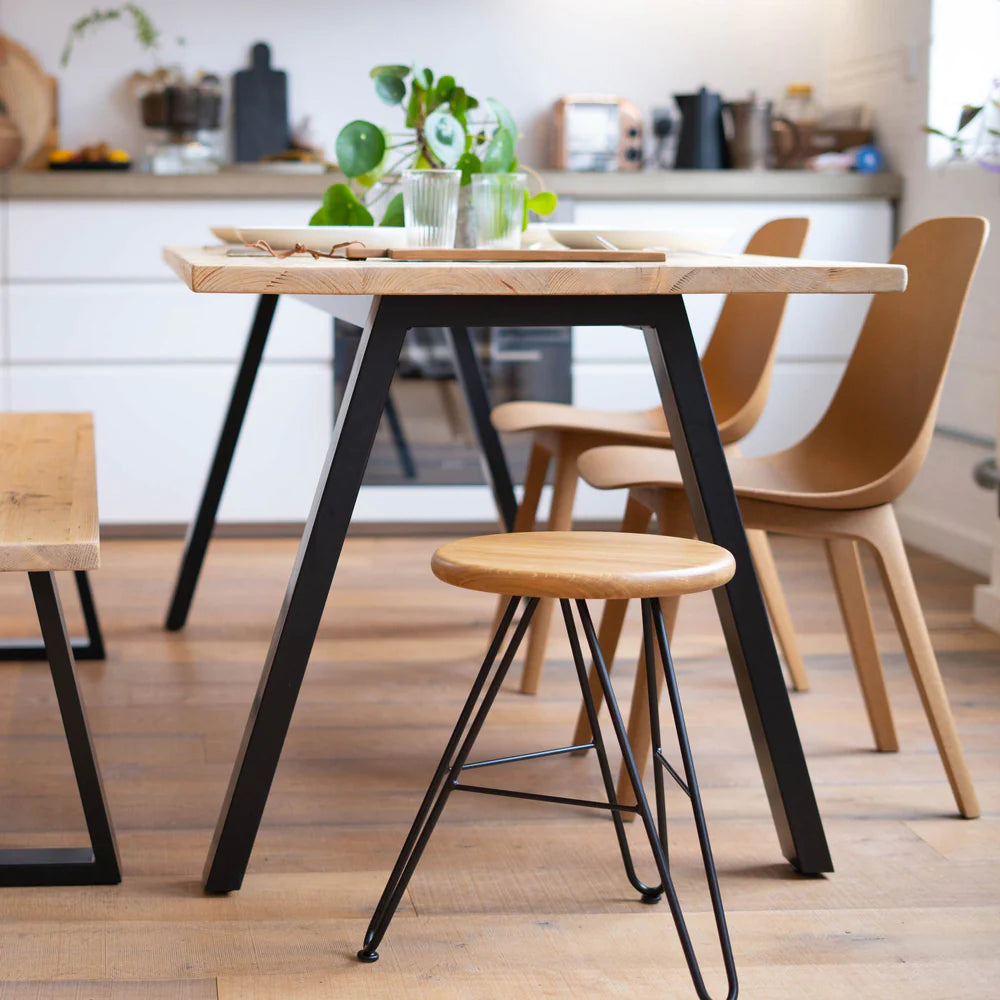Eating Table Legs: Just How to Select the Ideal Designs for Your Space
Selecting the right table legs is crucial for both visual and functional harmony in your eating room. Whether your space boasts a streamlined, modern ambiance or leans towards a more traditional ambiance, the design of the legs can dramatically affect the general look. Conical legs emanate contemporary elegance, while transformed legs provide a nod to classic charm. Past style, the product-- be it warm wood or streamlined metal-- plays a pivotal duty in establishing the tone. Yet how do you make certain these aspects match your existing design while providing the essential stability? The answer hinges on a balanced strategy.
Analyzing Your Dining-room Style
Just how do you determine the very best table legs for your room? The solution starts with a comprehensive evaluation of your eating space design. A natural layout makes certain that your table legs enhance the overall aesthetic instead of clash with existing elements. Start by observing the architectural features of your dining room. Are there prominent qualities such as exposed beams, elaborate moldings, or minimalist lines? These details frequently dictate whether a traditional, rustic, contemporary, or commercial design is most appropriate.
Next, take into consideration the existing furnishings and design. The materials, shades, and structures within the room play a crucial role. As an example, an eating room with sleek, modern-day chairs and metallic accents might gain from easy, structured table legs. Alternatively, a space loaded with classic pieces and abundant materials might require ornate, sculpted legs.
Lights likewise influences understanding. All-natural light can highlight particular materials and surfaces, while artificial lights can highlight different facets. Account for the space's range and percentages. Large, open eating spaces can accommodate much heavier, extra substantial legs, whereas smaller rooms require more fragile, inconspicuous designs. By very carefully assessing these elements, you can pick table legs that sympathetically mix with your dining space's design.
Popular Leg Styles Explained

One widespread style is the tapered leg, renowned for its sleek, modern appearance. Next off, the transformed leg features detailed spindle-like designs, usually found in standard and farmhouse setups.
Cabriole legs, with their unique contours, are associated with French Provincial and Queen Anne furnishings. Their elegant, flowing lines bring a sense of class and historic charm (dining room table legs). For those favoring a robust and simple design, square legs provide durable assistance and a tidy, geometric look, perfect for industrial or minimalist areas
Finally, barrette legs supply a retro, mid-century modern vibe. Made from metal, these legs are both lightweight and solid, including an one-of-a-kind visual comparison to wood table tops. Comprehending these styles will guide you in selecting eating table legs that enhance your room's visual and capability.
Material Considerations

Wood is a traditional option, recognized for its warmth and convenience. It is available in numerous species such as oak, walnut, and maple, each offering one-of-a-kind grain patterns and colors. Metal legs, typically made from stainless-steel, iron, or light weight aluminum, offer a modern-day and commercial appearance while guaranteeing durable assistance. They are commonly a lot more resistant to damage, making them a resilient choice.

Various other products like bamboo or rattan offer green options, bringing a natural and unwinded ambiance to the eating area. Each product has its pros and cons, and the best option will certainly depend upon your particular demands and preferences.
Balancing Looks and Performance
Attaining the ideal balance between appearances and capability is necessary when picking table legs. my link While the visual appeal of table legs can dramatically enhance the total ambiance of a dining space, their useful aspects can not be forgotten. The style of the legs need to integrate with the area's décor, yet they should likewise give appropriate support and stability for the table.
Consider the architectural design of your room. Smooth, modern-day interiors may profit from minimal, metal legs that provide a clean and inconspicuous appearance. On the various other hand, traditional settings often enhance transformed or sculpted wood legs that include a touch of elegance and elegance.
Capability includes the stability and resilience of the legs. For example, trestle legs, known for their click to read more robustness, can supply solid support for larger tables, making them perfect for family members or frequent entertainers. dining room table legs. On the other hand, pedestal legs can offer even more legroom and adaptability, enabling far better seats setups
Additionally, the elevation and positioning of the legs are critical for comfortable dining. Legs positioned also much internal may hinder seating, while those as well near to the edge can restrict movement. Hence, thoughtful consideration of both visual and practical aspects is extremely important for an ideal eating experience.
Personalization and DIY Options
Customization opens a world of opportunities for developing table legs that are uniquely customized to your preference and needs. Whether you look for a traditional, modern, or diverse look, individualized choices permit you to pick the exact products, coatings, and designs that best enhance your space. Adjustable alternatives variety from selecting the kind of wood-- such as oak, maple, or walnut-- to selecting steel surfaces like combed nickel or antique brass. Additionally, certain design components, such as transformed legs, tapered shapes, or complex makings, can be integrated to show your style.
For those inclined in the direction of diy (DO IT YOURSELF) tasks, creating custom-made table legs provides both a satisfying experience and the possibility to achieve a bespoke visual. DIY fanatics can source raw materials and make use of woodworking or metalworking devices to craft legs that fulfill accurate requirements. In addition, various on the internet tutorials and workshops provide guidance, making the process a lot more easily accessible for beginners.
Inevitably, whether selecting expert modification or starting a do it yourself venture, the capacity to customize eating table legs ensures that the final product integrates with your interior decoration vision, enhancing both performance and visual charm.
Conclusion
Selecting the suitable eating table legs needs cautious consideration of the general design of the dining space, consisting of existing architectural features and furniture. Ultimately, the chosen table legs need to match the design, giving both visual appeal and functional assistance.